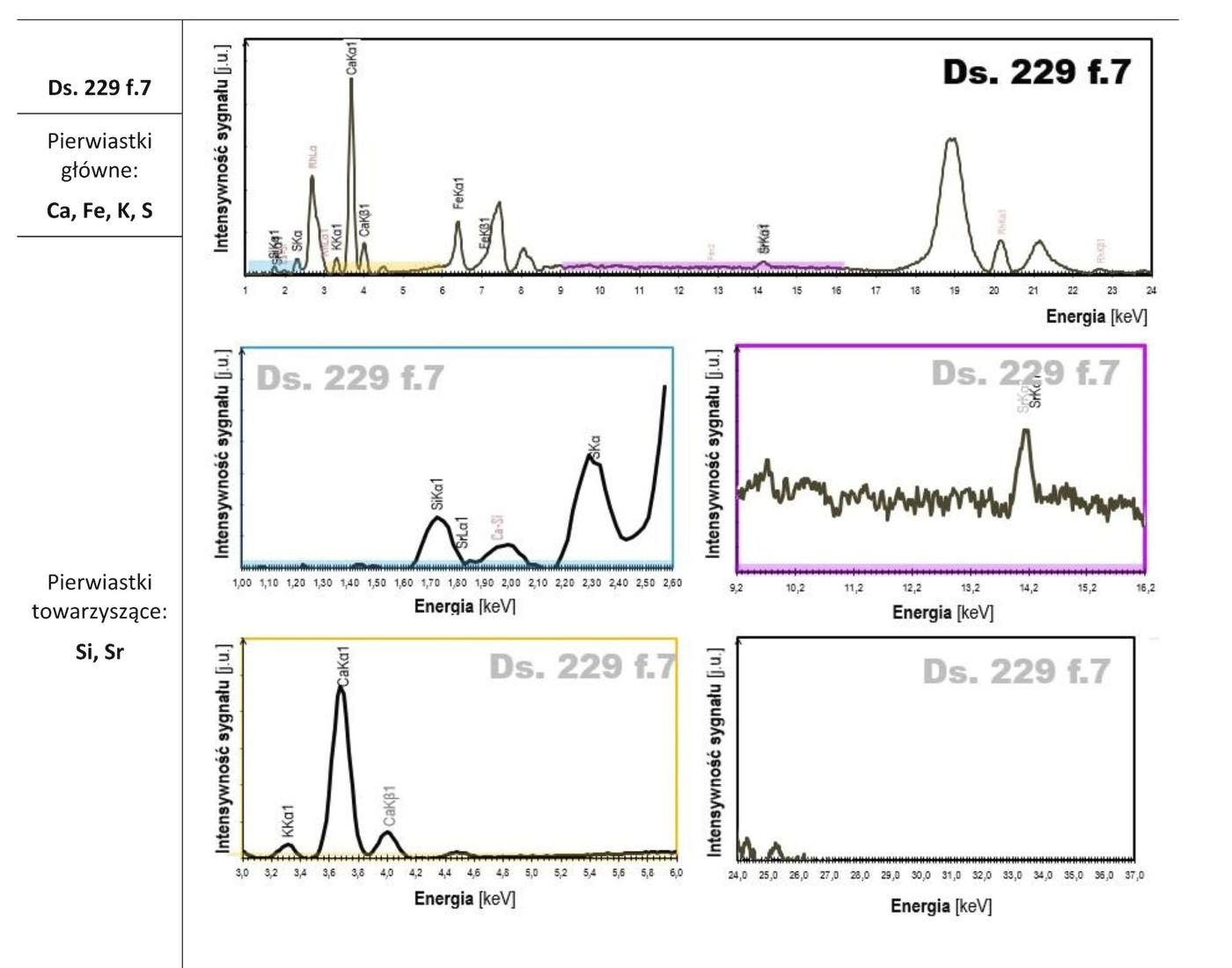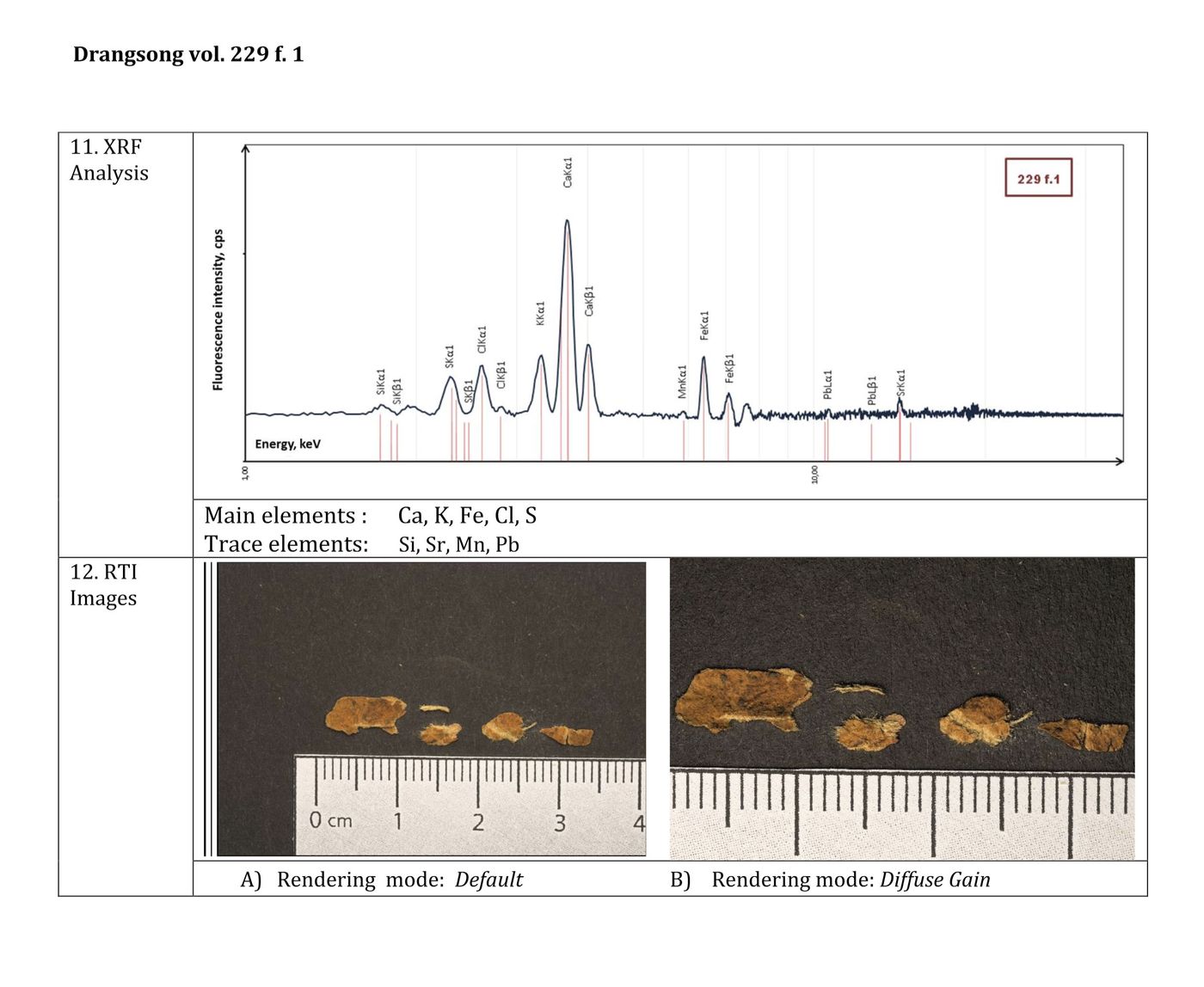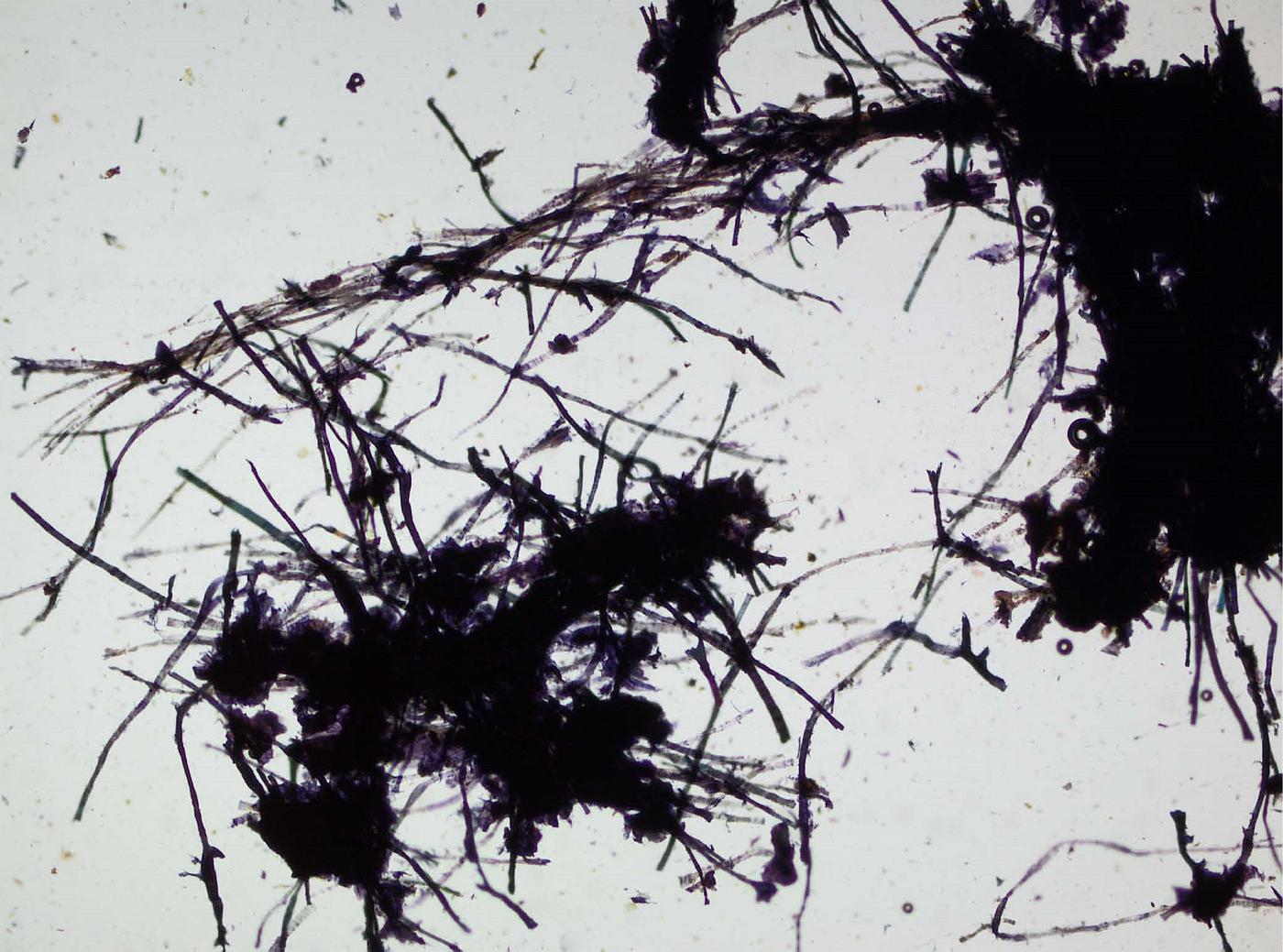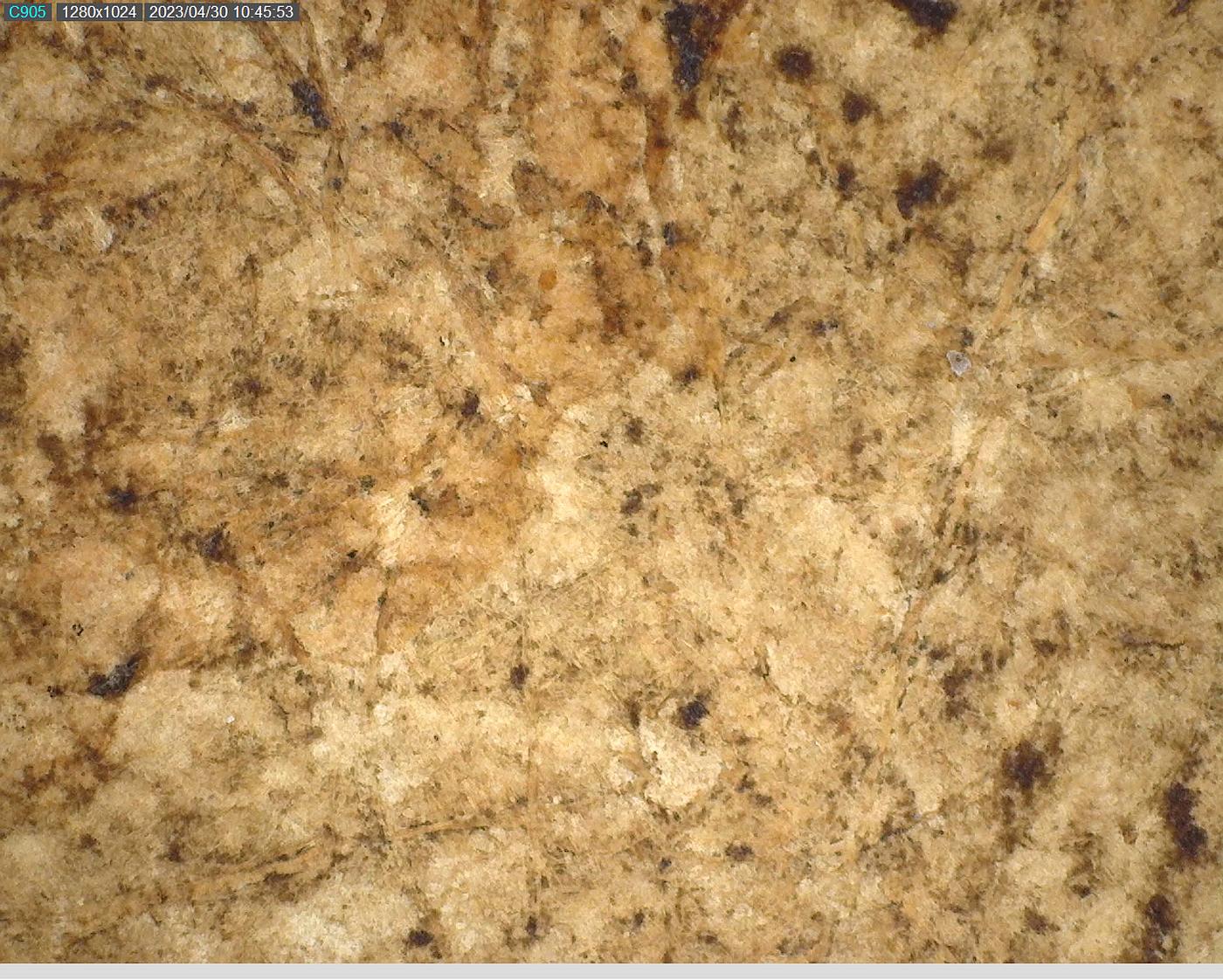DRANGSONG MANUSCRIPTS
| 1. Text number | Drangsong 229 |
| 2. Text title (where present) in Tibetan |
༄༅།།སྟག་ལ་སྤུ་གྲི་དམར་པོའི་འཕྲིན་ལས་ཚིགས་བཅད་སོ་སོའི་མངོན་རྟོགས་ཐུགས་རྗེ་རྒྱུན་འབྱུང་བཞུགསྷོ།། |
| 3. Text title (where present) in Wylie transliteration | sTag la spu gri dmar po’i ’phrin las tshigs bcad so so’i mngon rtogs thugs rje rgyun ’byung bzhugs+ho/ |
| 4. A brief summary of the item’s contents | A clear realization practice stage of Bon tantric deity sTag la me ’bar |
| 5. Number of folios | 11 |
| 6. Scribe’s name | |
| 7. Translation of title | The realisation of the verses of the separate stages in the [sādhana of] sTag la [me ’bar] the Red Razor, entitled “The constant source of compassion”. |
| 8. Transcription of colophon | |
| 9. Translation of colophon | |
| 10. General remarks | The first illustration (fol. 1v, left) is the Bon tantric deity sTag la me ’bar, the second (fol. 1v, right) may be Yang ston chen po (12th century)? The two portraits on fol. 2r are unidentifiable. See: V229_IMG_5788 |
| 11. Remarks on script | ’bru tsha, ’khyug ma tshugs |
| 12. Format | Loose leaves |
| 13. Size | 8.8 × 32.4 cm |
| 14. Layout | |
| 15. Illustrations and decorations | The first three folios of this manuscript are richly illuminated with paintings.On the first folio, the title is written at the centre of a triple, rectangular frame traced with double red lines and painted green, red, and yellow.
On the next two folios, where the text begins, miniatures are displayed on both sides of the text, enclosed in an elaborate frame painted red on the inside and green on the outside that recalls the title folio. These miniatures represent two pairs of Bon deities and masters, forming together a four-figure lineage of transmission related to the text. The miniatures of the second folio represent two figures in front view, with the little spaces left between the green frame of the central block of text and the figures themselves painted yellow. On the viewer’s left, in the most important position, is the wrathful male deity sTag la me ’bar in its red, one-faced and two-armed, standing form known as spu gri dmar po. The deity brandishes what seems to be a sword with his right hand and stretches out his left arm, showing a wheel (simplified in one central and five peripheral dark spots) with his left hand clenched in the threatening gesture. This is somewhat unusual as sTag la me ’bar is generally represented holding a wheel with his right hand and a cluster of nine swords with his left hand. Standing on a disk and a green lotus in a dynamic posture, the deity is surrounded here by a red halo of flames on a blue-sky background. He wears a five-pointed crown, golden earrings, necklaces, bracelets, a tiger skin passed around the waist as his lower garment, and a sleeveless cloak with a green edge, which is made of the skins of two tigers whose mouths serve as arm openings, and closed by a snake instead of a belt. The miniature on the viewer’s right represents a yogi figure holding the teaching of sTag la me ’bar expounded in the text. His right hand is raised in the discussion gesture while his left hand rests in his lap. Squatting on a disk and a yellow lotus with his right leg half bent and his left leg completely bent, his left knee touching the ground, his body and head are surrounded by halos of light. He has a blue complexion and wears his hair gathered in a bun. A tiger skin is tied around his waist, and a white shawl is passed over his shoulders and wrists. This yogic figure reminds that observed in the lineage sections of a number of thang ka paintings dedicated to sTag la me ’bar. On HAR 18356, it is clearly identified by caption as the sage sTag la me ’bar, who is not to be confused with the meditation deity of the same name but was involved in the transmission of the latter’s teachings. Alternatively, it might be identified as Dran pa nam mkha’, who is sometime represented as a blue yogi. By contrast, the two Bon masters portrayed on the third folio appear to be monks. The master in senior position (on the viewer’s left) is represented frontally with his hands raised in front of his chest in the gesture of teaching, while the figure in junior position (on the viewer’s right) is represented turned to the latter with his right hand touching the earth and his left hand raised in the gesture of fearlessness. Seated cross-legged on a disk and a light-blue lotus, the two masters have their bodies and heads surrounded by halos of light on a blue-sky background. Their skin colour is unexpectedly dark, which may result from an alteration of pigments, and their hair are short. They wear waistcoats and shawls according to the monastic sartorial style. |
| 16. Paper type | Woven, 2-3 layers, white painted surface |
| 17. Paper thickness | 0.15–0.30 mm |
| 18. Nos of folio sampled | f. 1 and f. 7 |
| 19. Fibre analysis | Daphne and Stellera sp. |
| 20. AMS 14C dating | Ds 229 f 7 R_Date(195,30)
Warning! Date may extend out of range – 195+/-30BP 68.3% probability 1661AD (15.8%) 1683AD 1736AD (44.5%) 1803AD 1936AD ( 8.0%) … 95.4% probability 1646AD (24.1%) 1695AD 1725AD (54.0%) 1813AD 1839AD ( 0.5%) 1844AD 1853AD ( 1.3%) 1877AD 1916AD (15.5%) … |
| 21. XRF analysis | Main elements: Ca, Fe, K, S
Trace elements: Ti, Zn, Sr, Si |
| 22. RTI | |
| 23. GCMS |






